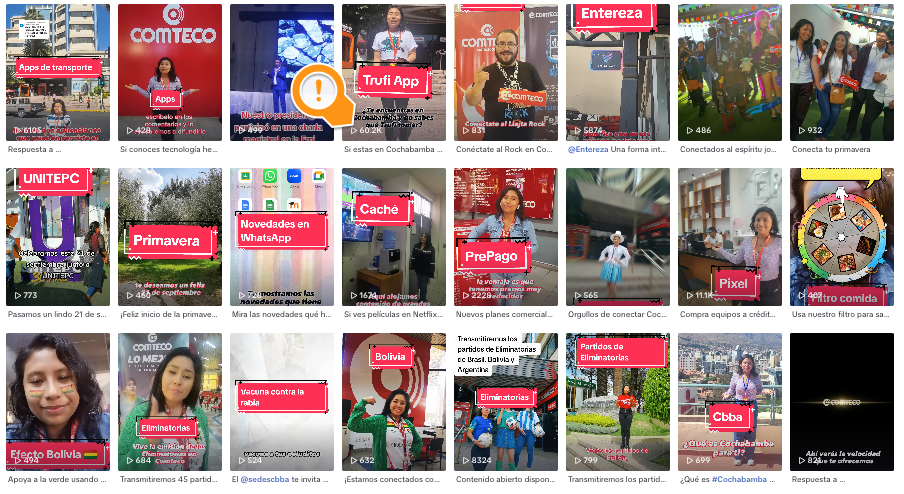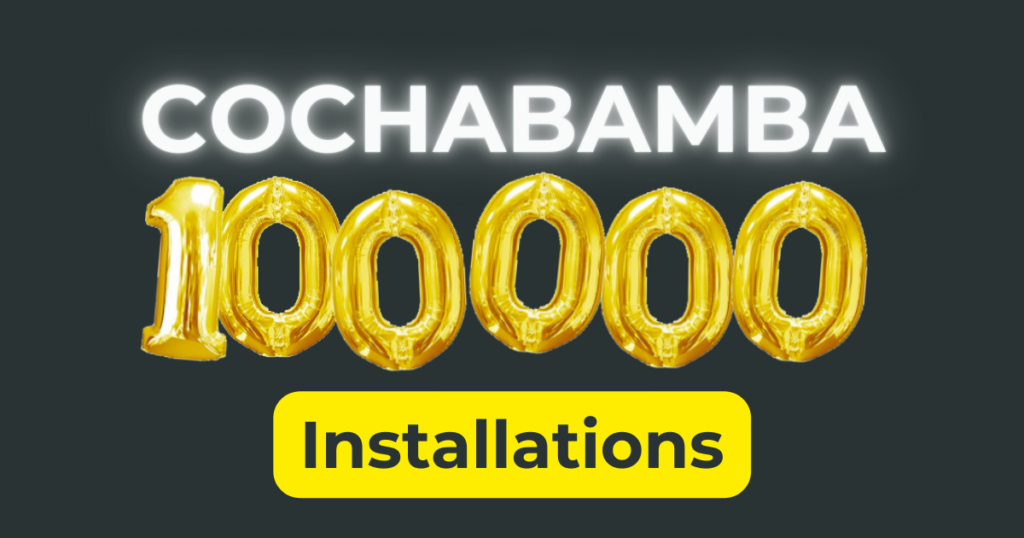The original Trufi App; the app for Cochabamba, Bolivia; the app that preceded even the creation of Trufi Association recently surpassed 100,000 installs. This achievement signifies not just a numerical milestone, but a testament to the power of community.
The community behind the Trufi app has done and continues doing what the local transport authority won’t do, what the bus companies won’t do, what big tech won’t do: It consolidates all of the city’s complex and unregulated bus routes together, and empowers people easily to get from Point A to Point B.
TikTok Strikes Again
What pushed the Trufi App for Cochabamba over the top? We’re pretty sure it was this video posted to TikTok by Comteco, a telecommunications cooperative based in Cochabamba.

Previously the app has received similar unsolicited boosts, such as from popular Cochabamba TikToker Carla Salló, and from a TV appearance by technology educator Marcelo Durán on the Bolivian program Tu Tarde Cochala.
But we noticed something particularly exciting this time: Looking at the other recent videos posted to the Comteco account, the video about the Trufi App blew everything else away. Sorry, Boba Fett Cosplay Guy, but Trufi App is 120 times more popular in Cochabamba than you are.
This suggests that the Comteco TikTok post triggered a chain reaction: Lots of people who already love the Trufi App liked and commented approvingly on the video, triggering the TikTok algorithm to push the video in front of more people in Cochabamba, leading more people to like the video and go looking for the app on the app stores.
Also Born in Cochabamba: Generating GTFS from OSM
The code behind the Trufi App (what we now call Trufi Core) was not always open source. But from the beginning, we used OpenStreetMap (OSM) as our source of the bus routes which we convert into GTFS (General Transit Feed Specification), which is the open standard for public transport data.
This groundbreaking technique would revolutionize the way public transportation route data is collected, managed, and shared. And our expertise with OSM and GTFS has earned us a seat at the table with the important group that continues to develop and expand the data standard. The use of OSM data to generate GTFS feeds has become a global best practice, thanks to the pioneering work that began in Cochabamba.
The journey to 100,000 installs required the dedication and support of the Cochabamba OSM community who crowdsourced the data.
Did We Mention the iOS Installs?
The 100,000 achievement is only the Android installs. Let’s not forget the iOS installs, which jumped to nearly 25,000 – which is saying something. In a country where iOS has just above 7 percent of the mobile operating system market share, approximately 20 percent of our app installs are on iOS.
But what does that mean?
Pure speculation: iPhones tend to cost more than Android phones. So it might mean that wealthier people in Cochabamba are overrepresented among Trufi App users.
Put another way: People who have more transport options including private cars are using public transport by choice, not because they can’t afford other options. We don’t have a lot of demographic data on Trufi App users, but it’s a question we can investigate now that we have more than 125,000 installs including iOS users. It’s good to have data.
Speaking of data…
The Power of 100,000+ Installs
The app is not monetized in any way. We make just as much money off of 100 users as we do 1 million users: none.
But a big user base means that the app can get even better. More users mean it’s more likely that missing routes will be added, that incorrect routes will be updated. It means that other mobility innovators can use the open data to create new services. It means transport researchers can analyze the data to better understand the dynamics of mobility in a city such as Cochabamba.
Having an impressive number of users also allows Trufi to approach funding institutions with a bit of newly-earned gravitas.
Beyond Numbers
While surpassing 100,000 installs is undoubtedly a momentous achievement, the impact of the Trufi App goes beyond mere numbers. It has empowered Cochabamba’s residents with sense of control and convenience in their mobility. It has reduced uncertainty and frustration, making public transportation more accessible to all.
Moreover, the legacy of the Trufi App extends far beyond Cochabamba. It has inspired similar initiatives in cities around the world, catalyzing change and promoting transparency in the realm of public transport, and enabling rapid development because the code is available as free open-source software (FOSS).
Support Trufi Association
As we celebrate this remarkable milestone of 100,000 installs, we look ahead. The Trufi App – Trufi Core – continues to evolve, driven by a community of passionate individuals committed to making transportation more efficient, accessible, and sustainable.
The lessons learned in Cochabamba have laid the foundation for transformative change elsewhere. You can support Trufi by making a one-time or recurring donation, and help ensure that the momentum behind 100,000 installs never stops, and more cities will soon celebrate 100,000 installs of their apps based on Trufi Core.



Pingback: weeklyOSM 690 – weekly – semanario – hebdo – 週刊 – týdeník – Wochennotiz – 주간 – tygodnik
Pingback: Celebrando Logros: Trufi Volunteers Unite in Cochabamba - Trufi Association
Pingback: The Year in Trufi: 2023 - Trufi Association